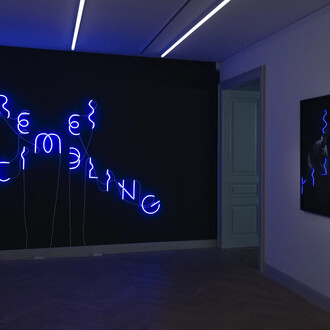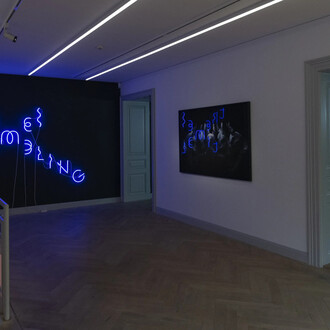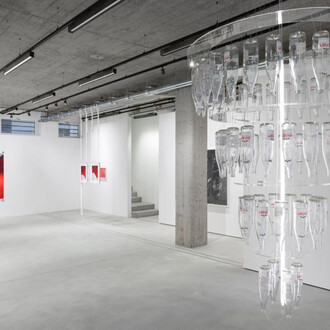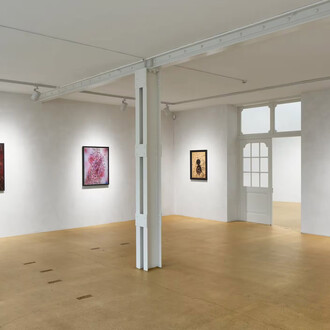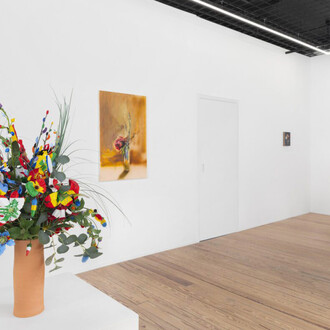More than twenty years after his last solo exhibition in Switzerland, internationally renowned artist Imi Knoebel (b. 1940 in Dessau, lives in Düsseldorf) presents a large-scale show at Museum Haus Konstruktiv. In keeping with the content that our museum focuses on, works that position Knoebel’s oeuvre in a dialog with the historical legacy of constructivist-concrete and conceptual art have been selected. We are very pleased to be able to exhibit not only important key works, but also pieces that were specially produced for this exhibition.
Imi Knoebel’s career as an artist began at the start of the 1960s in Darmstadt. He attended the art school Werkkunstschule Darmstadt from 1962 to 1964, where he carried out constructivist and structural composition exercises under Hanns Hoffmann-Lederer, based on concepts from the Bauhaus preliminary courses run by Johannes Itten and Lázló Moholy-Nagy. In Darmstadt, he also met Rainer Giese (1942–1974). Knoebel and Giese both adopted Imi as their first name and, from then on, they operated as “IMI & IMI“, whereby Imi was an abbreviation of “Ich mit Ihm“ (me with him) and a salutation that the two young artists would call out to each other when parting.
In 1964, the two Imis moved to Düsseldorf and studied at the local art academy, initially attending the commercial graphics class under Walter Breker. One year later, they switched to the class taught by Joseph Beuys in room 20. They obtained a workroom of their own, which they shared with Jörg Immendorff and Blinky Palermo at first, and which would become the nucleus of Knoebel’s oeuvre: room 19, which Knoebel named one of his key works after in 1968. The fact that there are now four different versions of Raum 19 (Room 19) demonstrates how important this early work remained for all of Knoebel’s work.
The third and largest version of this installation, Raum 19 III (1968/2006), also marks the start of the exhibition at Museum Haus Konstruktiv. Designed as a site-specific constructed image, it constitutes an extensive body of stacked and sequenced fiberboard panels, spatial bodies, angles and stretcher frames. Since 2006, Raum 19 III has been exhibited together with the piece Batterie (Battery, 2005) – an imposing cube of aluminum panels coated in phosphorescent paint. When combined, the two works grow closer and charge each other.
The 21-part body of works entitled Kernstücke (Core Pieces), presented on the fifth floor, also bears witness to the survival and continuation of early artistic concepts. Kernstücke can be read as a kind of artistic (and, in principle, extendable) alphabet that shows the fundamental principles of Knoebel’s understanding of art, from his beginnings to the present day.
Older and more recent works are presented in the exhibition spaces on the fourth floor. Here, it becomes clear that the art theory and artwork of Russian suprematist Kazimir Malevich (1878–1935) served as a key point of reference. In other series, Knoebel strongly refers to American color field painting and the minimalism of the 1960s and 1970s. For instance, in his red, yellow and blue piece Ich Nicht IV (Not Me IV, 2006), he decisively answers Barnett Newman’s question “Who’s Afraid of Red, Yellow and Blue?“ and thus also reactivates the discussion about the central role of the primary colors in the history of 20th-century abstraction.









